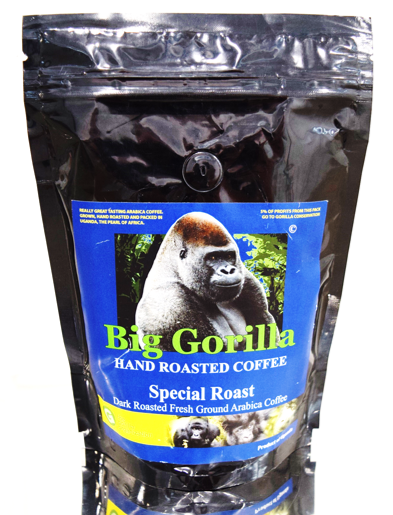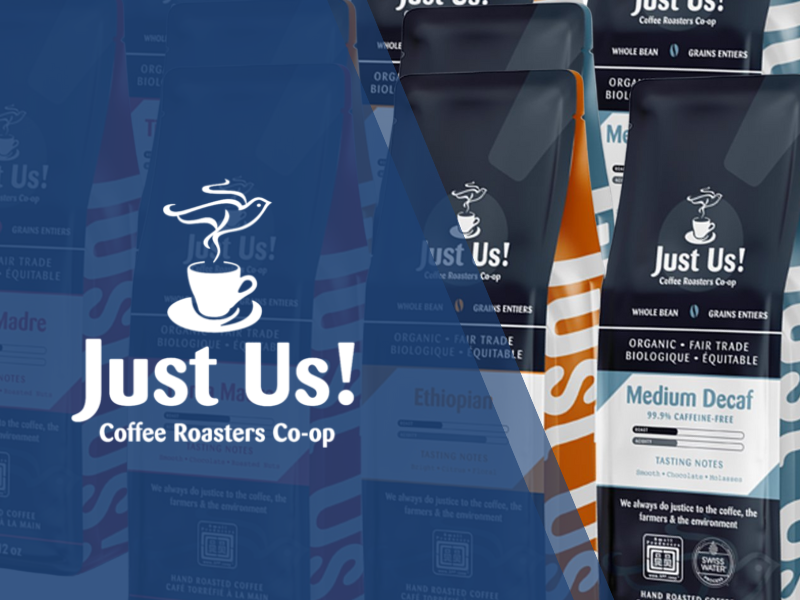4 Factors to Consider When Selecting Coffee Packaging
Your coffee packaging is your brand ambassador, a communicator of your company values, and what keeps your coffee fresh. It is a vital piece of your marketing and ensures the quality of your product on its journey to reach your loyal consumers. So don't treat it as an afterthought; give your coffee packaging the attention it rightfully deserves!

Here are 4 factors to consider:
1. Types of coffee packaging bags
As you look at store shelves in the coffee section, you will likely see 5 main types of coffee packaging bags, shown below:
 Flat Bottom Bag
Flat Bottom Bag
The flat bottom coffee bag is one of the most popular packaging formats in the coffee industry. It features a prominent shelf presence and is able to stand unassisted for maximum impact. Often the top of the bag is folded over or completely down into a brick shape and sealed.
 Quad Seal Bag
Quad Seal Bag
A quad seal bag is also very popular in the coffee industry. This bag has crisp side seals, can stand unassisted, and is attention-grabbing for its modular look. This coffee packaging bag type holds its shape very well and can support heavier fills of coffee. The quad seal bag usually is more costly than other bag styles.
 Pillow Bag
Pillow Bag
The most economical and simplistic bag type, the pillow bag is often used for fractional, single-serve coffee packaging formats. This bag style lays flat for display purposes. The pillow bag is by far the least costly to produce.
 Bag-in-Bag (BIB)
Bag-in-Bag (BIB)
Fractional packs of coffee can be packaged bag-in-bag into a larger package for foodservice or bulk sale purposes. Modern coffee packaging machines can form, fill, and seal the smaller frac packs and subsequently package those into a larger outer wrap on a single bag-in-bag machine.
 Doypack
Doypack
With a flat top and a rounded, oval-shaped bottom, the Doypack or stand-up pouch differentiates itself from more typical coffee package types. It gives the consumer an impression of a premium, small-batch product. Often fitted with zippers, this coffee packaging bag type is beloved by consumers for its convenience. This bag style usually costs more than other more simple bag types.
While stand-up pouches can be created on form fill seal machines, they are much better looking when purchased premade, and then filled and sealed on an automatic pouch packing machine.
2. Coffee freshness factors
Will your product be distributed to stores, cafes, businesses, or shipped to end-users nation- or worldwide? If so, your coffee will need to stay fresh until the very end. To accomplish this, Modified Atmosphere Packaging (MAP) options can be used.
The most popular modified atmosphere packaging system is ONE-WAY DEGASSING VALVES, which allow the natural build-up of carbon dioxide in freshly roasted coffee an escape route while not letting COFFEE FRESHNESS KILLERS like oxygen, moisture, or light inside the bag.
Other modified atmosphere packaging options include nitrogen gas flushing, which displaces oxygen in the coffee bag before filling, and use of high-barrier packaging materials. You can choose to use one type of MAP in your coffee bean packaging design or many, depending upon your needs. For most modern coffee packaging applications, all of the above are recommended.
3. Coffee packaging convenience options
With a busy consumer base that values their time above all, CONVENIENCE PACKAGING is all the rage in the coffee market.
Coffee roasters should consider the following options when catering to modern customers:
Modern consumers are less brand loyal than ever before and seek to purchase smaller, trial-sized packages of coffee as they explore their options. Click to Tweet
- Zippers
One of the most popular recloseable options, zippers mean a consumer can reuse the product after opening. Zipper reclosures provide an effective barrier against staling.
- Ties or tape
Popular in the coffee industry are tin tie and tape down closures. These reclosable options can be employed either independently or together on your coffee bean packaging machine. This choice is not as airtight as a zipper but is still a popular look for stand-up coffee packaging bags.
- Clear labeling
The Perfect Daily Grind attests that "you need a good label to communicate the origin(s), processing method, [and] roast date...of your beans." Customers want the whole story, in plain language, in plain sight.
- Minimal package design
Consumers are already overwhelmed with choices, visuals, and data. Make it easy for them to select your coffee with minimal use of graphics and bold, solid patterns in your coffee bag packaging design.
- 'Try me' package sizes
Bulk packages of coffee still have their place in the market, don't get us wrong. But modern consumers are less brand loyal than ever before, and they want to purchase smaller, trial sized packages of coffee as they explore their options.
4. Coffee packaging process
Will you be hand-filling your coffee bags or are you considering automating with COFFEE PACKAGING EQUIPMENT? If you plan to hand-fill your coffee bags, The Perfect Daily Grind recommends you choose a bag style that has a wide enough top opening to accommodate your scoop or filling apparatus. The Doypack may not be ideal in this situation as it only has two corners at its top opening, limiting the amount of room available for a filling tool. Compare this with the quad seal or flat bottom bag, which usually have four corners at their top openings and much more room to accommodate filling tools.
Also note that hand-packing, while it may have a lower cost to entry, seriously limits your throughput, accuracy, and ability to ramp up production on a moment's notice. If you already use - or are considering purchasing - automated COFFEE BAGGING EQUIPMENT, your bag options are almost unlimited.
Most modern coffee packing machines can easily accommodate multiple bag styles and sizes. Fill weights are no longer a worry as automated filling solutions can operate at a high level of accuracy. Your throughput can increase by leaps and bounds and if you suddenly receive a large order, scaling your production up is no biggie.
Need help planning your coffee production?
How long has it been since you've assessed your coffee production and packaging processes? There may be hidden inefficiencies present that are killing your business (and your roast).
Download our free Coffee Production Planning Tool for a comprehensive check-up:

Originally published 3/28/2017, updated 4/17/2018




